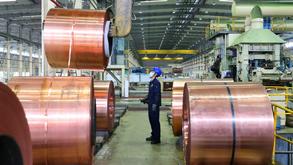 An employee works at a copper roll production facility in Dongyang, Zhejiang province, on Feb 27, 2021. (PHOYO BY BAO KANGXUAN / FOR CHINA DAILY)
An employee works at a copper roll production facility in Dongyang, Zhejiang province, on Feb 27, 2021. (PHOYO BY BAO KANGXUAN / FOR CHINA DAILY)
BEIJING - China's value-added industrial output, an important economic indicator, went up 6.4 percent year on year in July as production demand continued to recover, data from the National Bureau of Statistics (NBS) showed Monday.
The figure was up 11.5 percent from the level in July 2019, bringing the average growth for the past two years to 5.6 percent, NBS data showed.
In the first seven months, industrial output gained 14.4 percent year on year, resulting in an average two-year growth of 6.7 percent.
The industrial output is used to measure the activity of designated large enterprises with an annual business turnover of at least 20 million yuan (US$3.09 million).
In the first seven months, industrial output gained 14.4 percent year on year, resulting in an average two-year growth of 6.7 percent
In a breakdown by ownership, the private sector's output increased 6.1 percent year on year last month, while the output of state-holding enterprises rose 7.2 percent.
The manufacturing sector's output climbed 6.2 percent year on year in July and the mining sector saw its output increase 0.6 percent, Monday's data showed.
China's high-tech manufacturing sector continued fast expansion on the backdrop of the country's increasing resilience in innovation-driven development, NBS spokesperson Fu Linghui told a press conference.
Last month, the sector's output expanded 15.6 percent from the same period last year, with an average two-year growth of 12.7 percent.
China's manufacturing industry also saw the rapid development of new products in the period, with the output of new-energy vehicles surging 162.7 percent year on year, said Fu.
Previous NBS data also showed the purchasing managers' index for China's manufacturing sector came in at 50.4 in July, remaining in the expansion zone for the 17th consecutive month, despite disruptions to factory activities brought by high temperature and floods.
In the first half of the year, China's major industrial companies raked in combined profits of 4.22 trillion yuan, up 66.9 percent year on year. The expansion put the average H1 growth for 2020 and 2021 at 20.6 percent, the data showed.
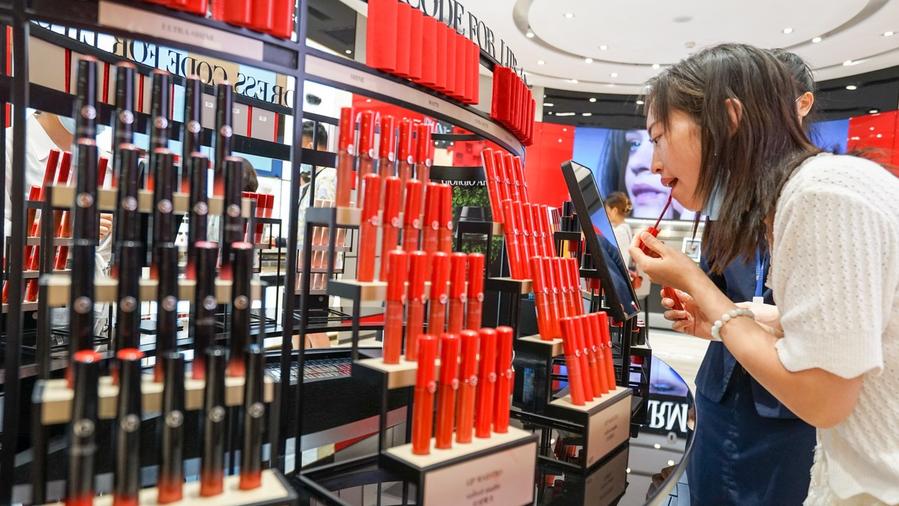 This undated photo shows a customer tries out cosmetics at a duty-free shop in Sanya, Hainan province. (WU WEI / CHINA DAILY)
This undated photo shows a customer tries out cosmetics at a duty-free shop in Sanya, Hainan province. (WU WEI / CHINA DAILY)
Retail sales up 8.5 percent in July
In the Jan-July period, retail sales surged 20.7 percent year on year, with the two-year average growth standing at 4.3 percent, according to the NBS
Consumption in China continued recovery momentum in July as domestic demand firmed up, according to the NBS data.
The country's retail sales of consumer goods totaled 3.49 trillion yuan (US$540 billion) in July, up 8.5 percent year on year, the official data showed.
Retail sales in July were 7.2 percent higher than the level in July 2019. The two-year average growth was 3.6 percent.
In the Jan-July period, retail sales surged 20.7 percent year on year, with the two-year average growth standing at 4.3 percent, according to the NBS.
In the first seven months, the catering industry saw a year-on-year increase of 42.3 percent in revenue, as the hardest-hit sector continued to recover from COVID-19 disruptions.
Online consumption remained a bright spot, with online retail sales rising 21.9 percent year on year to reach about 7.11 trillion yuan in the Jan-July period.
Housing market eases in July
New home prices in four first-tier cities - Beijing, Shanghai, Shenzhen and Guangzhou - rose 0.4 percent month on month in July, according to the NBS
The housing market in China slightly eased in July, with home price increases slowing down in 70 major cities, the official data showed.
New home prices in four first-tier cities - Beijing, Shanghai, Shenzhen and Guangzhou - rose 0.4 percent month on month in July, according to the NBS.
The growth rate is 0.3 percentage points slower than that seen in June. Prices of second-hand homes in the four cities gained 0.4 percent, down 0.3 percentage points from the growth in June.
Second-tier cities saw a month-on-month increase of 0.4 percent in new home prices, slowing down 0.1 percentage points from June.
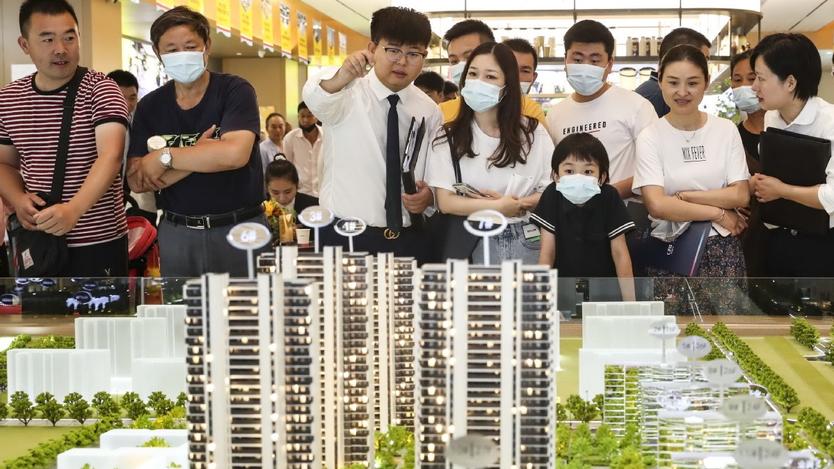 Potential homebuyers check housing models at a real estate agency in Huaian, Jiangsu province, in June. (ZHAO QIRUI / FOR CHINA DAILY)
Potential homebuyers check housing models at a real estate agency in Huaian, Jiangsu province, in June. (ZHAO QIRUI / FOR CHINA DAILY)
On a year-on-year basis, new home prices in first-tier cities rose 6 percent in July, down from the 6.1-percent growth in June, while those in second-tier and third-tier cities went up 4.7 percent and 3.3 percent, respectively.
Compared with the 2019 level, property investment went up 16.5 percent, putting average January-July growth for 2020 and 2021 at 8 percent
Property investment up 12.7 percent in first 7 months
The investment in property development rose 12.7 percent year on year in the first seven months of this year, according to the NBS.
Compared with the 2019 level, property investment went up 16.5 percent, putting average January-July growth for 2020 and 2021 at 8 percent.
Investment in residential buildings gained 14.9 percent year on year during the seven-month period, the NBS data showed.
Commercial housing sales surged 21.5 percent year on year in terms of floor area to nearly 1.02 billion square meters. In terms of value, commercial housing sales went up 30.7 percent.
The property development climate index compiled by the NBS last month came in at 100.98 points.
China continued to see a generally stable housing market in July, with increases in home prices in 70 major cities slowing down, separate NBS data showed.
New home prices in four first-tier cities - Beijing, Shanghai, Shenzhen and Guangzhou - rose 0.4 percent month on month in July, 0.3 percentage points slower than that seen in June.
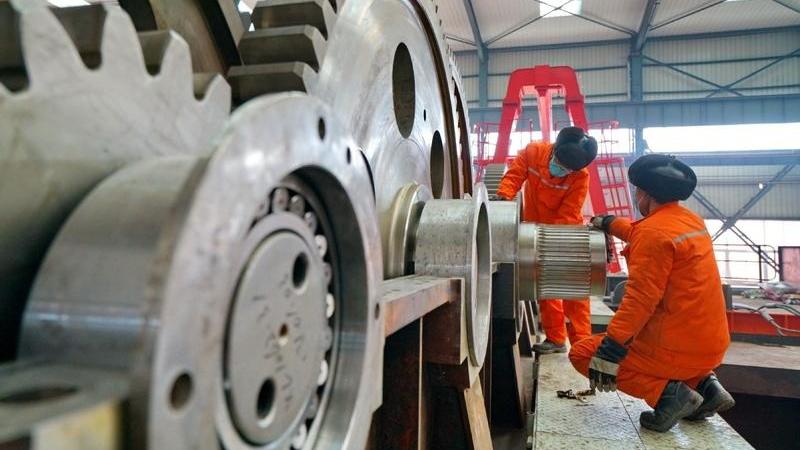 Employees work on the production line of a heavy machinery company in Tangshan, Hebei province, in December. (MOU YU / XINHUA)
Employees work on the production line of a heavy machinery company in Tangshan, Hebei province, in December. (MOU YU / XINHUA)
Fixed-asset investment up 10.3 percent in in Jan-July
The NBS data also indicated that the country's fixed-asset investment (FAI) went up 10.3 percent year on year in the first seven months of this year.
During the January-July period, the FAI amounted to 30.25 trillion yuan (US$4.67 trillion), according to the NBS.
Compared with the 2019 level, the FAI growth came in at 8.7 percent for the period. The average January-July growth rate in the recent two years stood at 4.3 percent.
Investment by the private sectors rose 13.4 percent to 17.35 trillion yuan in the first seven months, NBS data showed.
On a month-on-month basis, FAI gained 0.18 percent in July.
Investment in the primary industry increased 21.8 percent year on year in the first seven months, with that in the secondary industry rising 14.4 percent and that in the tertiary industry climbing 8.2 percent.
Specifically, investment in manufacturing and infrastructure gained 17.3 percent and 4.6 percent year on year, respectively, according to the data.
The FAI includes capital spent on infrastructure, property, machinery and other physical assets.
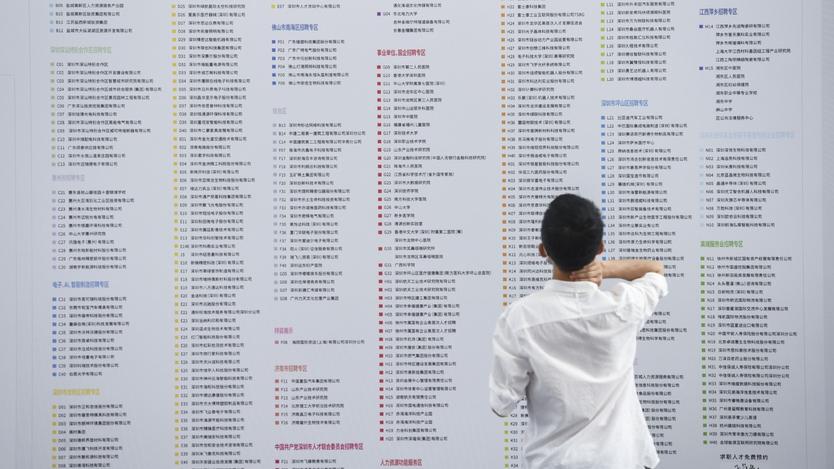 A job seeker browses employment information at a job fair in Shenzhen in November 2020. (PHOTO / XINHUA)
A job seeker browses employment information at a job fair in Shenzhen in November 2020. (PHOTO / XINHUA)
Job market remains stable in July
Monday's data also showed that China's job market remained generally stable in July.
A total of 8.22 million new urban jobs were created in the first seven months, achieving 74.7 percent of the annual target, according to the NBS.
The surveyed unemployment rate in urban areas stood at 5.1 percent in July, up 0.1 percentage points from that registered in June.
READ MORE: Commercial property investment in GBA seen hitting US$7.7b
The surveyed unemployment rate among those aged between 25 and 59, the majority of the labor market, came in at 4.2 percent in July.
Meanwhile, the surveyed unemployment rate in 31 major cities was 5.2 percent last month, unchanged from June, said the NBS.


